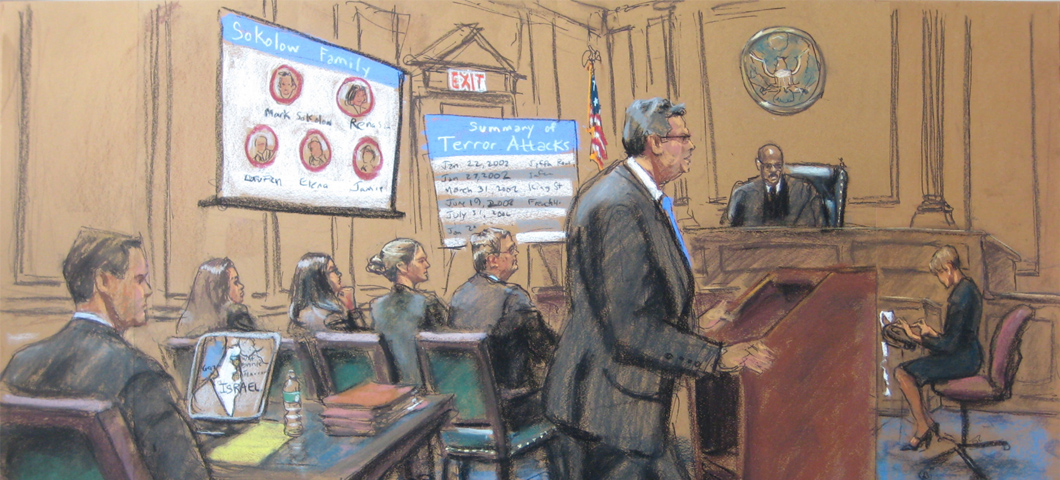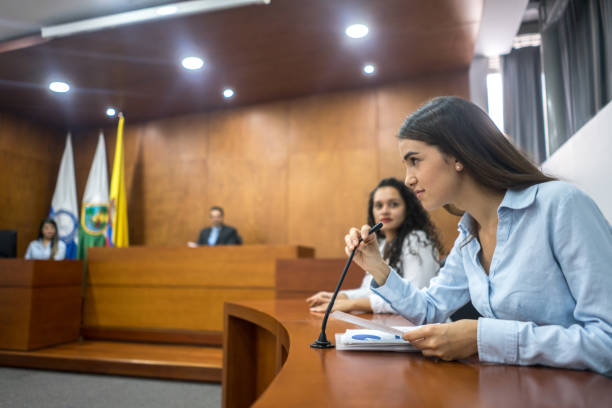From Idea to Court: Steps to Produce Powerful and Convincing Trial Presentations
From Idea to Court: Steps to Produce Powerful and Convincing Trial Presentations
Blog Article
Browsing the Complexities of Test Presentations: Tips for Seamless Delivery and Compelling Debates
In the world of lawful proceedings, the art of test presentation stands as a critical factor of success. The intricacies integral in test discussions call for a delicate balance of ability, skill, and method.

Comprehending Trial Objectives
To successfully browse a test, it is important to have a clear understanding of the objectives that need to be accomplished. Prior to entering the court, lawful groups must specify their goals and preferred end results. These purposes offer as guiding concepts throughout the trial, shaping strategies and influencing decision-making processes.
Recognizing trial purposes includes a comprehensive analysis of the situation, lawful criteria, and the customer's ideal passions. Trial Presentations. It calls for a meticulous evaluation of the facts, identifying essential problems, and expecting potential challenges. By setting measurable and specific objectives, lawyers can customize their presentations and arguments to align with the desired outcomes
In addition, a clear grip of test goals enables legal teams to focus on proof, witnesses, and lawful disagreements efficiently. It allows for the growth of a systematic narrative that resonates with the court and court, enhancing the overall instance discussion.

Organizing Proof Successfully
Having a clear understanding of test goals lays the foundation for arranging proof successfully in legal proceedings - Trial Presentations. By aligning the discussion of proof with the preferred outcomes of the test, lawful teams can strengthen their debates and boost their persuasiveness. One vital element of organizing proof is classification. Grouping proof based upon themes or importance to certain legal elements can aid enhance the presentation and make complicated information a lot more absorbable for the court or court.
Another key aspect in arranging evidence successfully is developing a rational circulation. Presenting evidence in a sequential and meaningful fashion can help develop an engaging story that supports the legal disagreements being made. In addition, using visual aids such as timelines, graphes, or charts can even more improve the company of proof and aid in clarifying complex connections or sequences of events.
Additionally, making sure that all proof offered is permissible and pertinent to the situation is vital. Unnecessary or inadmissible proof can detract from the toughness of the debate and possibly hurt the integrity of the providing party. Therefore, a meticulous review and selection procedure must be embarked on to consist of just the most impactful and legally audio proof in the test discussion.
Crafting Influential Narratives
Crafting compelling stories plays a critical role in providing convincing arguments throughout lawful procedures. A well-crafted story has the power to mesmerize the audience, evoke emotions, and eventually persuade the decision in support of the offering celebration. When constructing a narrative for a test presentation, it is crucial to develop a clear story that highlights key factors and attaches them in a meaningful fashion. Begin by detailing the truths of the instance in a compelling manner, making sure that the sequence of events is easy to follow. Introduce personalities successfully, supplying history details that assists the target market comprehend their actions and motivations. Additionally, integrating vivid descriptions and engaging language can bring the story to life, making it much more remarkable for the discretionary. By weaving with each other proof, testimony, and legal disagreements right into a convincing and natural story, lawyers can efficiently support for their clients and raise the possibility of a favorable result in the court room.
Mastering Visual Help
Reliable usage of visual help is essential to boosting the impact and clarity of trial discussions. Aesthetic aids, when used strategically, have the power to simplify complex information, strengthen bottom lines, and leave a long lasting impact on the court and jury. To understand visual help in trial discussions, it is important to ensure that they are clear, concise, and pertinent to the arguments being made.
When including aesthetic help, such as charts, photographs, graphs, or timelines, into a test presentation, it is necessary to maintain them visually appealing yet expert. The visuals need to match the verbal arguments, supplying a visual see post depiction of the details being discussed without overwhelming the audience with unnecessary details.
Furthermore, exercising with the visual aids in advance is vital to make sure a seamless distribution during the trial. Acquainting oneself with the material, transitions, and timings of each visual aid can assist keep the circulation of the discussion and stop technological glitches that might arise.
Providing Impactful Closing Debates
A compelling closing disagreement works as the conclusion of a test presentation, enveloping the core story and convincing the court and jury in the direction of a favorable choice. To provide an impactful closing debate, it is essential to succinctly wrap up bottom lines, highlight the strengths of your instance, and attend to any type of weak points in a tactical fashion. Begin by outlining the primary arguments that click for source sustain your customer's position, stressing why the proof offered throughout the test supports your narrative. It is necessary to develop a feeling of communication and quality, leading the court and jury in the direction of the desired final thought.
Moreover, incorporating sob story can even more enhance your closing disagreement. By humanizing the case and attaching on a personal degree with the decision-makers, you can evoke compassion and understanding, influencing their assumption of the realities presented. In addition, reiterating the legal criteria that must be satisfied for a beneficial ruling can strengthen the legitimacy of your position. Inevitably, a well-crafted closing debate ought to leave a long lasting perception, compelling the discretionary to rule in your client's favor.
Verdict
In verdict, grasping test discussions involves understanding objectives, organizing evidence, crafting narratives, making use of visual help, and supplying impactful closing arguments. By applying these strategies properly, attorneys can offer their instance flawlessly and make engaging arguments in the court room. It is critical to navigate the complexities of test discussions with accuracy and ability to attain success in lawful procedures.
By straightening the presentation of evidence with the wanted results of the test, legal teams can reinforce their disagreements and enhance their persuasiveness (Trial Presentations). To master visual help in trial presentations, it is crucial to ensure that they are clear, concise, and relevant to the disagreements being made
An engaging closing disagreement offers as the culmination of a test discussion, enveloping the core story and convincing the judge and jury towards a positive decision. Begin by outlining the main debates that sustain your client's position, highlighting why the evidence offered throughout the trial supports your story.In final thought, mastering trial discussions entails comprehending goals, arranging proof, crafting narratives, utilizing visual help, link and providing impactful closing disagreements.
Report this page